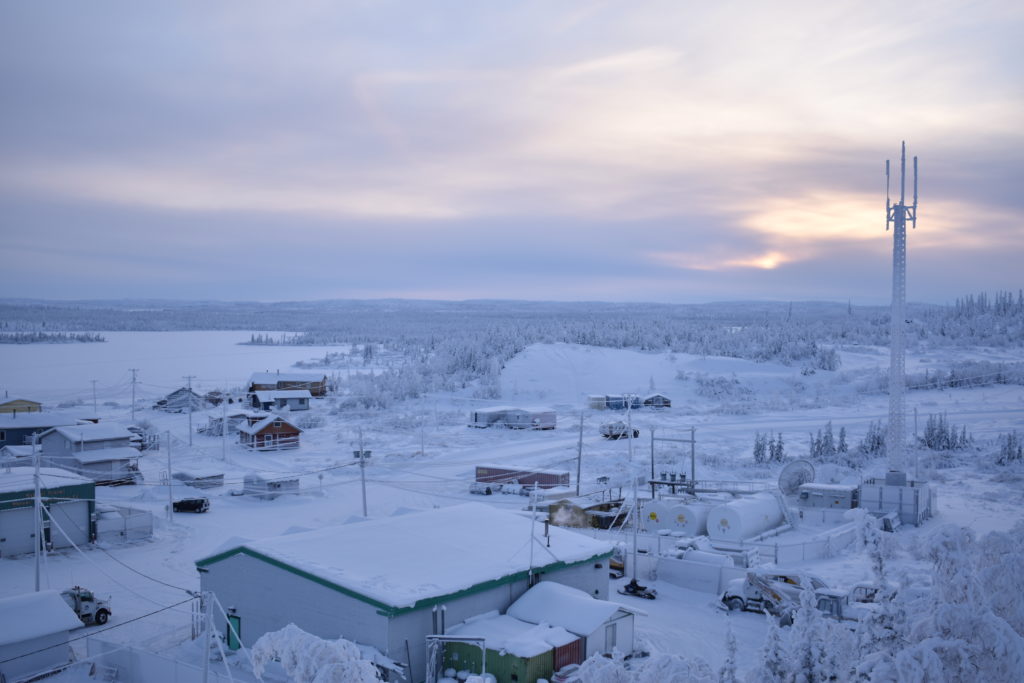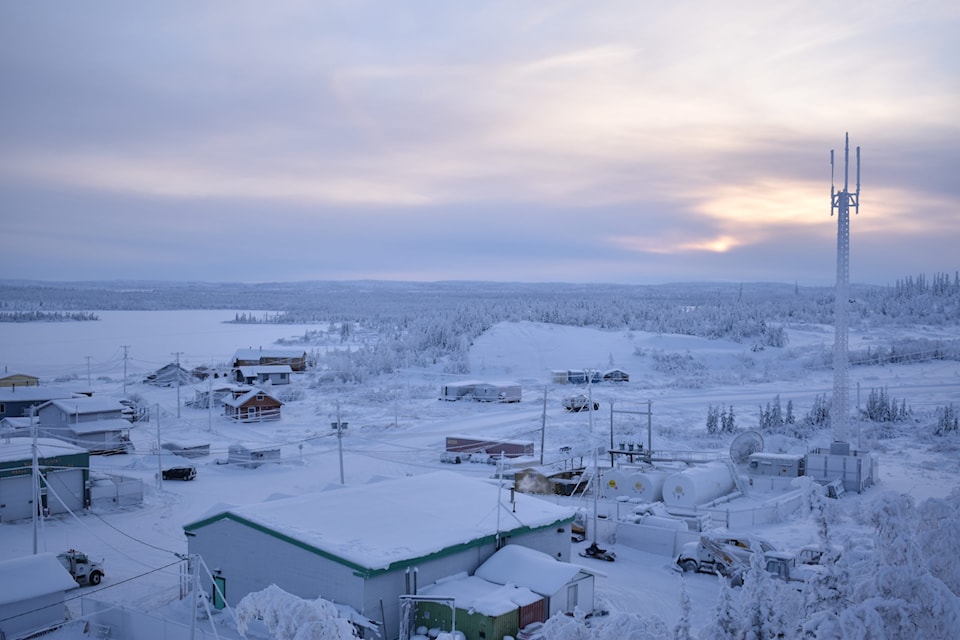Driving near the airport in Wekweètì, keen observers might notice an airplane sitting just before the treeline, on the north side of the road.
It's not a monument. It's not an old trapper's makeshift shelter. And it's probably not a bear's den. It's simply a derelict plane.
What is known about the plane is that it's been sitting there about 300 metres from the runway, abandoned for at least 26 years in the fly-in Tlicho community.
But that's the only set of facts that everyone agrees on.
"Everyone here has their own version of the story but nobody seems to have the exact details," said Melizia "Zia" Costa, operations manager with the Tlicho Community Services Agency in Wekweètì.
When Costa first arrived in the community about a year and a half ago, she saw the aircraft and thought, "You (don't) want to see a little crashed plane by the airport!"
She asked residents about it and was told it was the first plane that landed at that airport, in 1994. Costa said Wekweètì's original airport was on the west side of town, but when the tank farm was built the airport had to be moved as per federal regulations and it was relocated to its current spot on the east side.

"It's always the same story. You laugh when you hear the story. I don't understand why it's by an airport where aircraft come in and it's just been sitting there," Costa said. "Wouldn't you want to get it out of here? It's clearly damaged. It would need to be put on a flatback (truck) and taken out on the ice road."
"I've spoken to several people and the one thing they agree on is that it was the personal plane of a man named Dave from Hay River. I can't get a last name."
Roy Judas witnessed the plane's demise in 1994 when he and several others were working on extending the airstrip.
He concurs that it belongs to someone from Hay River.
"I don't think it was the first plane to land here, but I'm not sure," said Judas, who works as a caribou monitor with the Department of Environment and Natural Resources.
"It was in the winter. I don't know what month but it was cold. We saw (the plane) land. The plane was already parked. The pilot and mechanic were warming up the plane. They flipped the propeller but no one was inside it. I don't know why they did that with no one in it," he recalled.
"The propeller was going faster and faster. The plane started to go forward and didn't stop. They tried to stop it but couldn't. It went into a little blue house near the airport and it went into a dip and stopped.
"And then the propeller hit the ground and bent. The props bent down. They called it in, I think. It was moved to its current place several weeks later."
Judas sees the plane all the time when he drives to and from the airport and he wonders why it's still sitting there after so many years.
"I don't know if people here want it taken away. I never asked them about," he said, laughing. "Sometimes (kids) play around it. I don't think it's locked. Nothing happens to it. It's getting rusted."
Longtime Northern aviator and Buffalo Airways founder "Buffalo" Joe McBryan provided a short list of details on the abandoned aircraft, which were relayed by Kristine Cook, his executive assistant.
The Cessna 310 plane landed in Wekweètì in 1995.
Its propeller is bent and the nose gear is collapsed.
It was owned by the late Bruce Cornock, a respected pilot who worked for years in the North. He passed away in 2012.
"Bruce never got around to taking it out of Wekweètì," Cook said, without elaboration.
From the GNWT's perspective, the plane can't be moved from its resting place on government land until its ownership is established.
"While we are aware of the plane at the Wekweètì airport, we do not have record of its history or ownership at this time, as there are no identifiers on the plane," said Sonia Idir, spokesperson with the Department of Infrastructure. "The GNWT would be open to engaging with the community of Wekweètì to discuss any path forward to disposing of the plane."
The federal Transportation and Safety Board, responsible for aviation safety, archived a report which spokesperson Alexandre Fournier said "possibly" refers to the Cessna in Wekweètì.
"The pilot of the Cessna 310 tried to start the engines to warm them up while awaiting his passenger's return to the airport. He hand-propped one engine and got it running; when the second engine started the aircraft taxied across the ramp into a snowdrift collapsing the nose gear. Both propellers, engine, and right-hand fuselage were damaged, but there were no injuries."
